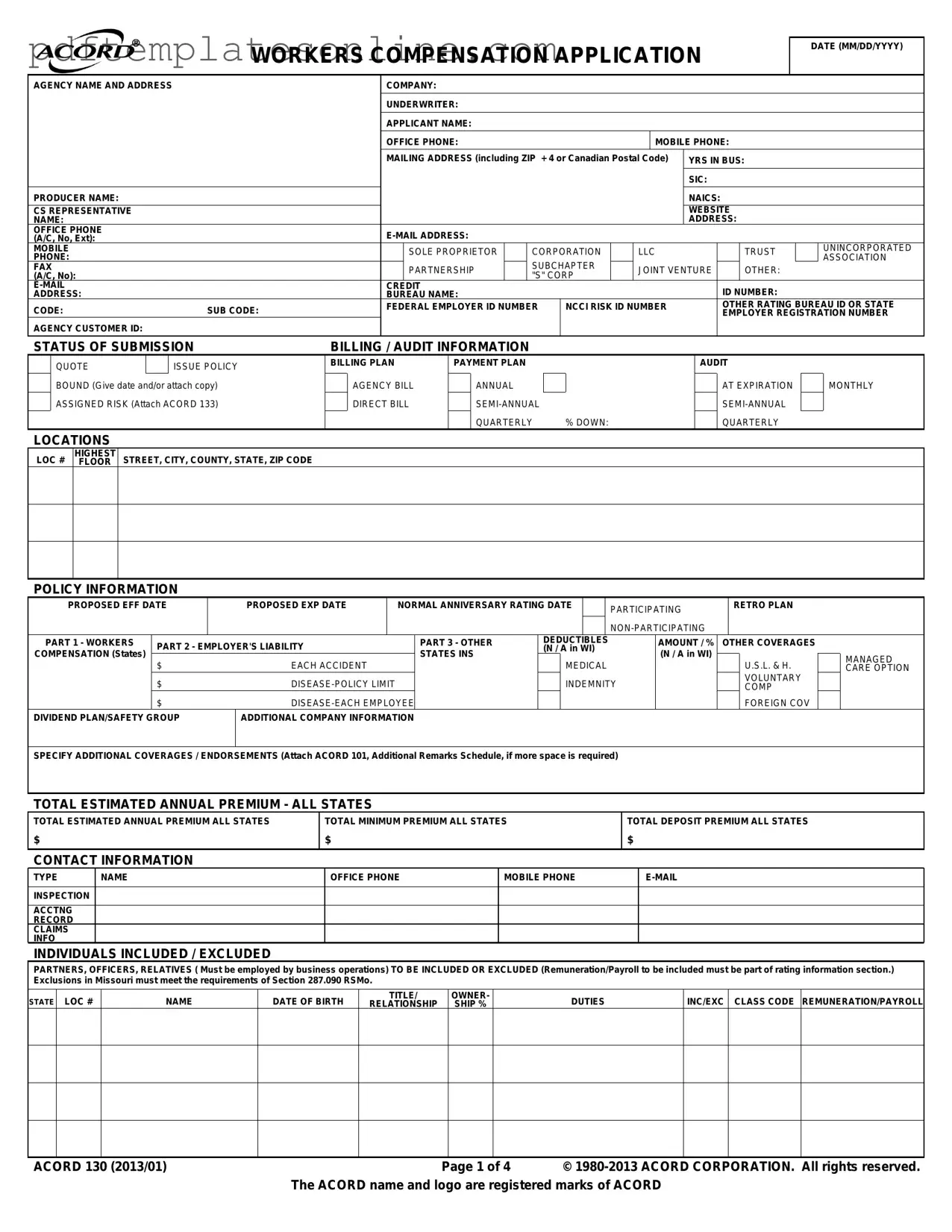Filling out the ACORD 130 form can be a straightforward process, but many applicants make common mistakes that can lead to delays or complications in obtaining workers' compensation insurance. One frequent error is failing to provide accurate contact information. It is crucial to include correct details for both the applicant and the agency. Missing or incorrect phone numbers and email addresses can hinder communication, causing unnecessary delays in processing the application.
Another mistake often made is neglecting to specify the correct business structure. The form requires applicants to indicate whether they are a sole proprietor, corporation, LLC, or another type of business entity. Misclassifying your business type can lead to incorrect premium calculations and coverage issues. Always ensure that the selected option accurately reflects your business's legal structure.
Many applicants also overlook the importance of detailing the nature of their business operations. Providing a vague or incomplete description can result in misclassification of risk, which may affect coverage and premiums. Clearly articulate the types of work performed, the materials used, and any subcontracting arrangements. This information is vital for insurers to assess the risk accurately.
Additionally, applicants often fail to disclose all relevant employees. It is essential to list all individuals included or excluded from coverage, along with their roles and remuneration. Omitting employees or misrepresenting their duties can lead to significant issues during audits or claims. Ensure that all pertinent information is captured accurately to avoid complications later on.
Lastly, applicants sometimes skip the section regarding prior carrier information and loss history. This information is crucial for insurers to evaluate the risk associated with your business. Providing incomplete or inaccurate loss history can lead to higher premiums or even denial of coverage. Always include detailed information about past claims and losses to facilitate a smoother underwriting process.
